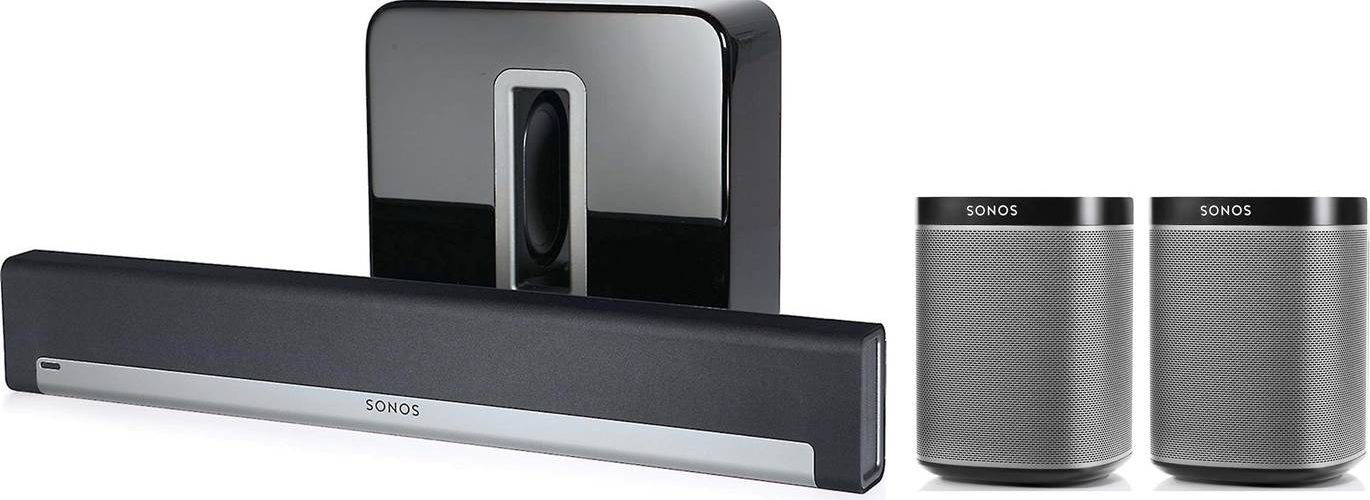A home theater system is a great way to bring the experience of the cinema into your living room. But the confusing nest of wires can frustrate even a professional installer, so why not go pro with a wireless home theater system?
Wireless technology has come a long way over the years. Initially limited to simple cell phone calls and messages, complex systems can now send video, audio, and file data over wireless networks. Every day, the technology for producing this wireless communication is increasing, making a wireless home theater all the more viable.
Wireless home theater speaker systems allow multiple types of speakers to communicate the audio signal through the air, meaning less cords for vexed consumers to deal with. However, most systems are not completely wireless because some type of physical connection must exist in order to actually power the speakers and amplify the sound.
What does this mean for the typical consumer? Well, even though a wireless home theater surround system cannot be completely wire-free, a wireless DVD home theater system will greatly reduce the frustration of a traditional system by replacing many of the longer wires – those which transmit the audio signal – with wireless transmitters and receivers. Additionally, because wireless surround home theater systems no longer have a wire, they can often be placed at great distances from the audio source – sometimes up to 300 feet.
Choose your Weapon
Wireless speaker technology is as varied as it is powerful, and there are a few different methods of transmitting a wireless signal.
One is based on wireless networking, the same technology which powers Wi-Fi for your computer. This method establishes a network on a wireless band, which connects the speakers, subwoofer, and television. Often laptops can tap into the network as well, providing an easy way to listen to music anywhere within the network’s range.
For Hi-Def fans, wireless HD allows the transmission of high quality sound without cables. Simply plug the audio output into a receiver that will wirelessly broadcast the sound to speakers, making HD television, movies, and music mobile.
Another method employs Bluetooth connections, the same method that is often found on wireless phones and mice. Tapping your speakers, audio output from your TV, and any other Bluetooth devices into a central unit allows reduction of wires. Many wireless subwoofers use this technology.
A final option, called HomePlug, takes a different approach. Instead of replacing the audio signal wire and still being stuck with the power cords, HomePlug seeks to use a home’s existing wiring to send both sound and power to the speakers.
What to Look For
Options for making your home theater wireless range from basic, one bar speaker and subwoofer setups to complicated, full surround sound theater systems. Cheap wireless home theater systems start around $250, while more elaborate options can exceed $2000. For a wireless home theater setup that will replicate Hi-Def audio, a package will start around $500.
When choosing a wireless home theater surround sound system, keep a few points in mind. First, home-theater-in-a-box systems are cheaper and easier to install, but offer less quality than a more comprehensive system. Be sure your current television or audio player is compatible. Some cheaper models of wireless home theater sound systems require additional cords or amplifiers at additional costs. Finally, given that many households have DVD, television, CD, radio, and computer sources, be sure the wireless package has enough inputs to handle all the different media.
The Bottom Line
Like any hi-tech purchase, wireless home theater audio systems come in a wide range of prices and packages that can be customized to fit an individual’s specific needs. No matter which Blu Ray wireless home theater system you choose, taking the wires out of home theater is another step in reducing the clutter – and frustration – of television, music, and movies.
Related Posts
<>



